5 Major Ports in Peru
Situated in South America, the country of Peru is one of the largest nations, with a steadily growing economy. This economic growth is primarily directed by its export sector that brings valuable foreign exchange for financing imports and payment of international debt.
Other important sectors are services, manufacturing and industries. Increased foreign investments due to economic reforms, and the growing export sector has boosted the health of the Peruvian economy. It has resulted in a decline in poverty rates and unemployment.
The main trade partners of Peru include China, the United States, Canada, South Korea, Japan, Netherlands, Switzerland, India etc. Major Peruvian export products in 2020 include ores, ash and slag that were worth 13.3 billion US dollars followed by pearls, precious stones and vegetables that accounted for 6.78 billion and 680 million US dollars respectively.
Peru has a diverse geography, with mountains, river valleys and plains. It borders the Pacific Ocean on the west, where most of the Peruvian ports are located. The nation has about 40 ports, including seaports and river ports.
Recognizing the importance of trade and shipping, the government has paid considerable attention to port development and expansion projects. In the mid-1990s, Peruvian ports were managed by numerous operators in a public-private partnership; however, in 1970, ENAPU, a public company was formed for the operation and management of the ports. Let us look at some of the major Ports in Peru.
Port of Callao
Callao Port is the major commercial seaport of Peru, situated just 12 kilometres from the capital of Lima and is close to other important Peruvian ports. The port is protected by a natural harbour in the Pacific and deals with exports of metals, fish meals, fish oil and minerals. The import products include wheat, machinery and lumber.
Numerous industrial establishments are situated near the port such as breweries, factories processing fish food, and ship construction yards. The port is home to a huge naval base and is frequented by container ships, breakbulk carriers carrying dry and liquid bulk, liquefied gas, containers, etc. and also passenger vessels.
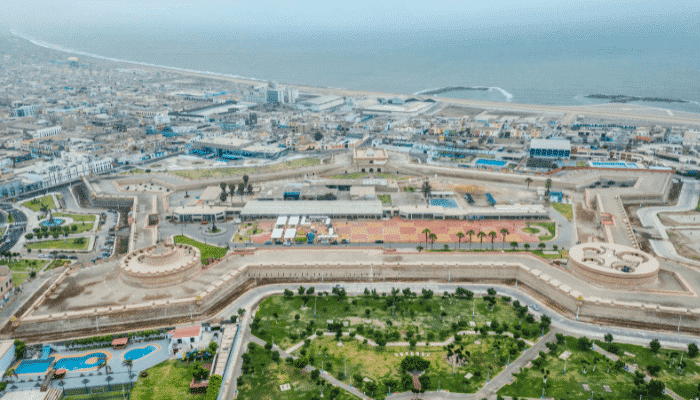
The port has been operational since the 15th century and was crucial for the Spanish for transporting the gold and silver acquired from the New World to Spain. An earthquake in the 1940s destroyed the port infrastructure and it was subsequently rebuilt and expanded in the following years. Presently, Callao Port is part of the metropolitan area of Lima and also an important trading centre, functioning as Peru’s distribution hub of import and export shipments.
The port spans around 47 hectares and comprises 8 wharves and 18 berthing facilities. The port entrance is 180 m broad and can accommodate vessels with a maximum draft of 10 m. The water depth at the port is 11 m. The storage space spans 24 hectares for keeping containerised cargo, including 3 steel silos for storing 26 metric tonnes of grain and cereal. The port’s annual handling capacity is around 1,051,000 TEUs.
The port is equipped with modern infrastructure and fully operational equipment which includes 5 shore cranes, 4 gantry cranes, 15 reach stackers, 27 trucks, 7 electric cranes etc.
Five pipelines situated at one of the docks aid in discharging white and black fuels. Pipeline 1 carries gasoline, kerosene, diesel while pipeline 2 is for transferring Liquefied petroleum gas, propane, butane etc. Pipeline 3 carries chemicals such as acrylonitrile, methane, and methanol. Another pipeline transfers petroleum and asphalt.
Port Callau has two terminals namely the North Pier Terminal, and the South Pier Terminal.
The North Terminal is mainly operated by APM terminals and handles containers and fertilizers, grains, chemicals, coal, vegetables and fish oil. The terminal is undergoing expansion and it is estimated that by end of 2022, its handling capacity would increase to 2.9 million TEUs and about 10 million tonnes in case of general bulk cargo. Also, a cruise facility is located at this terminal since Callau is a popular tourist spot.
The South Terminal, operated by DP World Callao, deals with containers. This terminal became operational in 2010 and comprises a 5-acre storage space, with an annual handling capacity of 900,000 TEUs.
Port of Paita
Port of Paita lies about 500 miles, near the northern coast of Callao. It is the major port of the northern part of the country since it handles about 10% of the total goods traffic. Major export goods include canned and refrigerated fish, fruits such as mangoes, grapes, bananas, shrimp, phosphate, cotton, ethanol etc. Imports mainly comprise general cargo such as automobiles, fertilizers, cereal, grain, vegetable oil.
Paita port has been operational since medieval times and was considered an important port, frequented by European whaling ships in the 19th century. It had a well-protected natural harbour that offered convenient mooring for these ships, who halted for repairs, maintenance at the port including restocking ship supplies. In the late 1990s, the port expansion began and presently Paita port is an important container port of Peru.
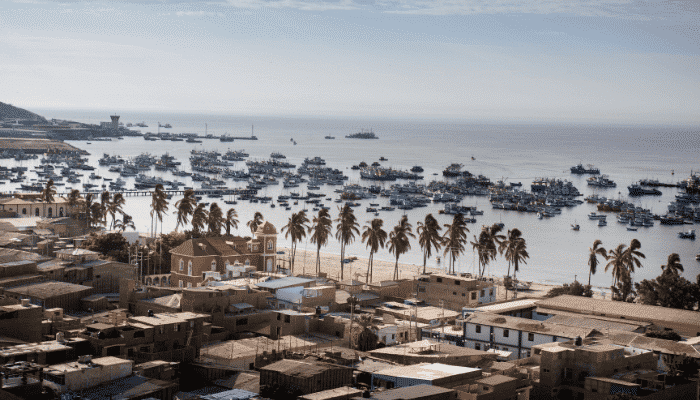
The port development project began in 2014 to modernise the port facilities aimed at increasing port productivity. In 2019, the port handled about 300,000 TEUs showcasing tremendous progress compared to the previous years.
Paita Port comprises two terminals, a conventional berth measuring 370 with a draft of 10.2 m and another berth for container handling, 305 m long with a draft of 13 m. The former can accommodate 5 ships at once.
One of the Wharves can accommodate ships weighing about 40,000 DWT and is utilised primarily for handling containerised cargo and some conventional cargo vessels etc. The second wharf can handle carriers weighing more than 60,000 DWT. It deals with containers as well as heavy, bulk cargo.
The port has an enormous storage capacity, spanning 143,000 sq m, divided into three areas for storing container goods, frozen products and general bulk. It also has a cold storage facility and 1900 reefer points.
The port is endowed with the latest port equipment such as 5 shore cranes with a capacity of 50 tonnes, 7 gantries for container handling with a capacity of 60 tonnes, 3 mobile cranes, 5 reach stackers, 15 port trucks, 13 transtainers and 4 forklifts.
Port of Matarani
Matarani port is situated in the southern region of Peru. This port handles conventional cargo, grain, cereals and exports of coffee, wood, animal hides, tin ingots etc. It also serves as a transhipment port for Bolivia. It exports around 400,000 tonnes and handles 500,000 tonnes of imports every year. In the year 2020, the port was visited by about 500 ships and the cargo throughput amounted to 6.2 million tonnes.
The port comprises two conventional cargo handling docks, one dedicated for general cargo, containerised goods, liquids, measuring 570 m with a draft of 9 m. The second berth is 270 m long and handles shipments of minerals only.
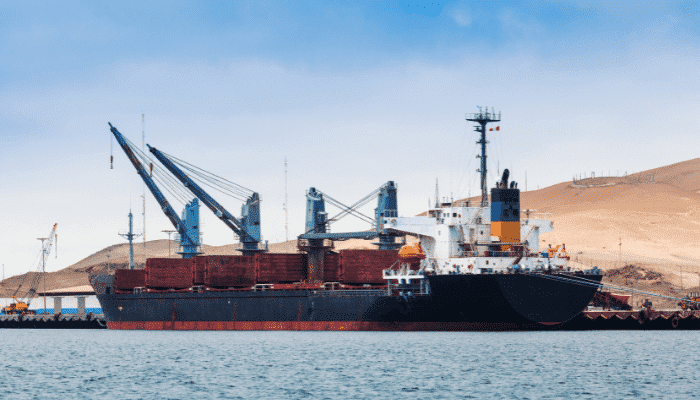
The smooth functioning of port operations is supported by modern port equipment such as two shore cranes with a capacity of 70 tonnes, 3 normal cranes, 2 reach stackers, 6 trailers, 4 transtainers and 3 forklifts.
The port has an expansive container storage capacity spanning 23,000 sq m. The port also stores alcohol and edible oil in its silos located in the main port area. Since the port handles mainly agricultural goods such as grains and cereal, a warehouse spanning more than 3500 sq m is used for grain storage. This facility comprises 60 tanks capable of storing 74,000 million tonnes. Minerals are kept in 6 storehouses with a capacity of 500,000 million tonnes approximately.
Port of Salaverry
Located in northern Peru, Salaverry port is an important port facility of the region handling bulk cargo and fishmeal, ores, grains, fertilizers such as urea, phosphate etc. The port has specific arrangements for handling bulk sugar shipments.
Salaverry port has an artificial man-made harbour with breakwaters extending to 700 m, with a water depth of approximately 8 m. The port is frequented by 200 ships and handles about 970,000 tonnes of cargo annually. In the year 2019, the port handled 1900 TEUs.
The navigation channel is 150 m broad, with an average depth of 31 ft stretching till the two concrete wharves. Vessels with more than 28 m draft can enter the port facility during a high tide only.
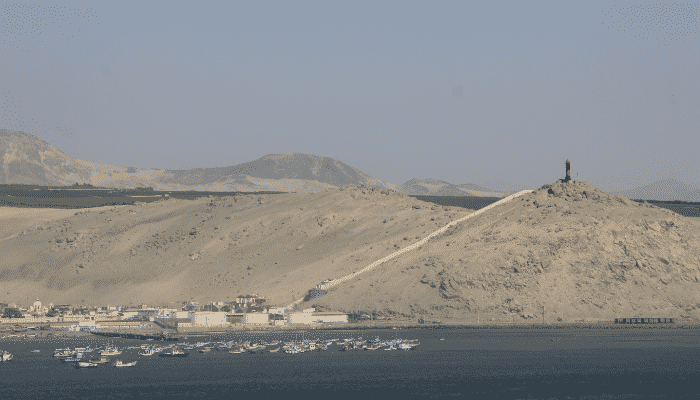
The port comprises two general cargo berths, the first measuring 230 m, with a draft of 11m. The second berth is 240 m long with a draft of 9 m. However, the port is undergoing expansion to provide enhanced storage facilities and increase the volume of maritime traffic handled at the facility.
The port has been refurbished with modern port equipment such as mobile cranes, 3 reach stackers with a lifting capacity of 50 tonnes, 3 tug masters with a capacity of 67 tonnes, 3 transtraniers and 5 forklifts.
A container handling area spanning 26,600 sq m is dedicated for containerised cargo. The port has a cold storage facility including 25 reefer plugs.
Since the port handles diverse cargo shipments, it has distinct facilities for handling and storing these goods. For instance, the port has 25 tanks with a capacity of 65,000 metric tonnes for keeping cereal, corn etc. It has a 30,000 metric tonne capacity for storing beans, 50,000 metric tonnes for keeping urea and 35,000 metric tonnes capacity for storing minerals.
Port of Iquitos
Situated in the northeastern region of the country, on the river Amazon, Iquitos port is one of the important river ports of Peru, playing an intrinsic role in the shipping and distribution of goods in inland regions and cities. This port facility mainly ships lumber, derived from the Amazon rainforests and numerous industries manufacturing rum, beer etc and oil refineries are situated in the port city.
The port was built in the late 18th century and was a major Peruvian port when the region experienced the rubber boom in the 19th century. However, the significance of the port declined when the boom came to an end in the 1900s. It was revived and became operational in the 20th century with the commencement of infrastructural development in the eastern region.
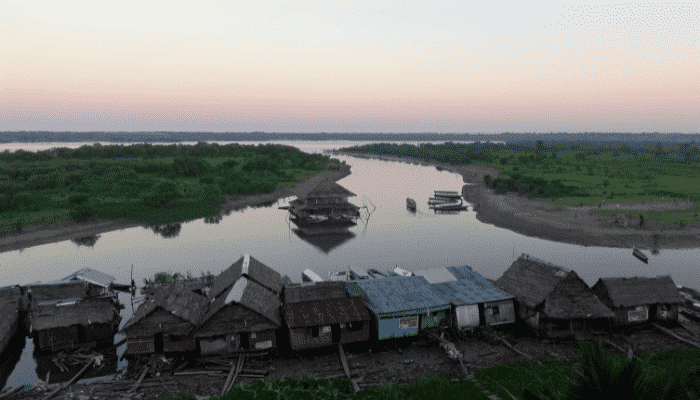
Port of Iquitos is regarded as the centre of trade, industry and tourism in eastern Peru. It has also become a famous oil exploration site by the government. It is also a famous tourist destination due to its closeness to the Amazon rainforests.
The port has two floating type wharves, a general cargo berth with a length of 113 m and a draft of 5 m and a container handling berth measuring 71 m with a draft of 7 m. The container storage yard spans 9,500 sq m and the port has 2 reefer plugs. The port also has 5 warehouses covering 26,900 sq m, for keeping packaged food items and grain.
The port equipment comprises 2 shore cranes with a lifting capacity of 50 tonnes, gantries, cranes with a capacity of 30 tonnes, 3 trailers, and 4 forklifts, all in operational condition.
The port is undergoing expansion as it has a narrow entrance that restricts and decreases the cargo traffic. A new cruise facility has become operational primarily for small boats, aiding travel between Iquitos and the neighbouring regions.
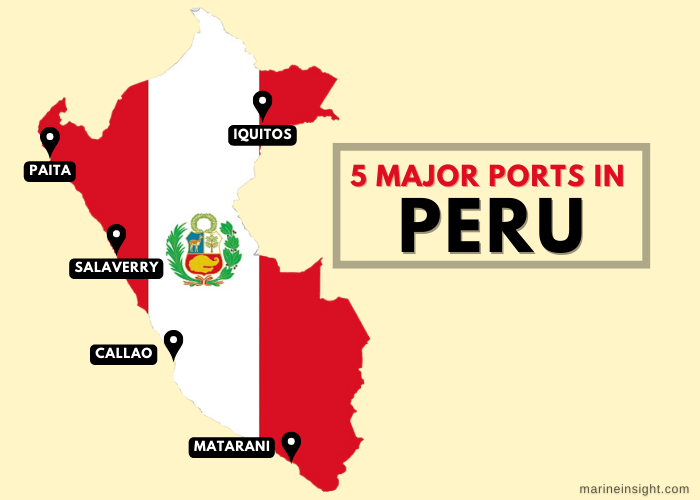
You might also like to read:
- 5 Major Ports In Liberia
- 3 Major Ports of Angola
- 5 Major Ports In Japan
- 5 Major Ports In Iraq
- 6 Major Ports in Ghana
Disclaimer :
The information contained in this website is for general information purposes only. While we endeavour to keep the information up to date and correct, we make no representations or warranties of any kind, express or implied, about the completeness, accuracy, reliability, suitability or availability with respect to the website or the information, products, services, or related graphics contained on the website for any purpose. Any reliance you place on such information is therefore strictly at your own risk.
In no event will we be liable for any loss or damage including without limitation, indirect or consequential loss or damage, or any loss or damage whatsoever arising from loss of data or profits arising out of, or in connection with, the use of this website.
Do you have info to share with us ? Suggest a correction
Disclaimer :
The information contained in this website is for general information purposes only. While we endeavour to keep the information up to date and correct, we make no representations or warranties of any kind, express or implied, about the completeness, accuracy, reliability, suitability or availability with respect to the website or the information, products, services, or related graphics contained on the website for any purpose. Any reliance you place on such information is therefore strictly at your own risk.
In no event will we be liable for any loss or damage including without limitation, indirect or consequential loss or damage, or any loss or damage whatsoever arising from loss of data or profits arising out of, or in connection with, the use of this website.
Latest Maritime Knowledge Articles You Would Like:
Subscribe To Our Newsletters
By subscribing, you agree to our Privacy Policy and may receive occasional deal communications; you can unsubscribe anytime.















